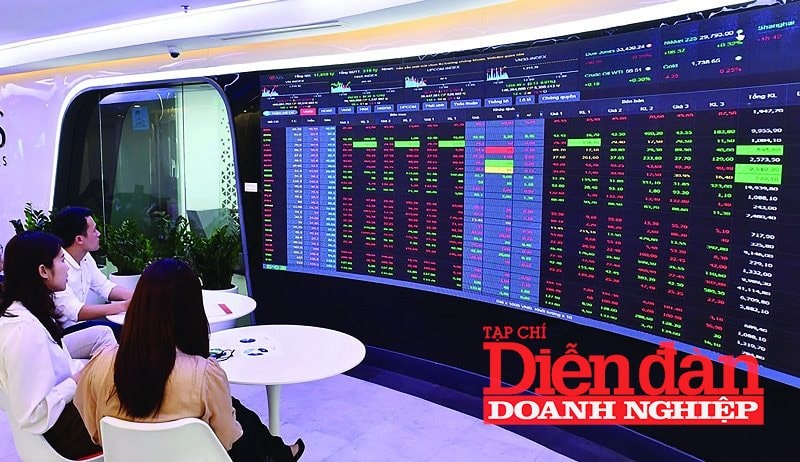Any risks for the rising stock market?
According to Dr. Đinh Thế Hiển and the VFA Group Research Team, Vietnam’s stock market posted a strong rally at the beginning of Q3/2025, building on the 'steady' growth of the first six months despite tariff-related turbulence.

VN-Index rose 8.4% in H1/2025
What Drove the Rally?
Although the U.S. tariff policy in early April 2025 caused significant volatility, the VN-Index still rose 8.4% in H1/2025.
With credit expanding sharply in June (loan growth in June 2025 exceeded 3%, injecting VND 600 trillion into the market), equities responded strongly, continuing their rally in July and August.
By August 15, 2025, the VN-Index was up 28.4% year-to-date and 18.5% compared to end-Q2—a remarkable surge given that Vietnam’s economy, while showing positive GDP growth, still faces notable challenges. This indicates that the main driver behind the market’s rally has been ample liquidity from credit expansion, supplemented by expectations linked to the launch of the KRX system and anticipation of an FTSE Russell market upgrade in September 2025.
Liquidity also spiked in July and August, with average daily trading in August exceeding VND 43 trillion. Trading activity was concentrated in banking, financial services, real estate, and materials—sectors directly benefiting from monetary easing, increased liquidity, and public investment.
At the same time, valuations have remained reasonable thanks to robust corporate earnings in H1/2025.
Corporate Earnings on the Rise
After-tax profit of listed companies surged 35.1% YoY, with nearly all sub-sectors reporting double-digit growth. Banking posted 15.8% YoY earnings growth, driven by strong credit expansion and lower provisioning. Real estate saw triple-digit growth, largely due to a low base following NVL’s heavy financial losses; excluding this, the sector’s after-tax profit grew 13%, while overall market earnings rose 27%.
Based on macro conditions, continued monetary and fiscal easing, strong public investment, and manageable tariff impacts on exports, the research team forecasts after-tax profit growth for HOSE-listed companies at around 16% for 2025.
Despite the sharp market rally, valuations remain modest: VN-Index trades at a P/E of 15.3 and P/B of 1.9, both below the five-year average.
Two Scenarios for VN-Index
Given the earnings outlook of 16–16.5% growth in 2025, VN-Index could deliver a 26% gain for the year (equivalent to a P/E of 15.5), suggesting the index may reach around 1,600 points by year-end.
However, risks remain. The rally has been uneven, concentrated in banks and a few large-cap real estate firms. Most open-end funds, which invest based on fundamentals, only recorded gains of 8–15% by mid-August, far below the 28% increase of the VN-Index.
Foreign investors, after net buying in July, have resumed selling. Year-to-date, they remain net sellers with an estimated outflow of USD 1.8 billion. If credit-driven liquidity support weakens, the VN-Index could correct below 1,500 points in Q4.








